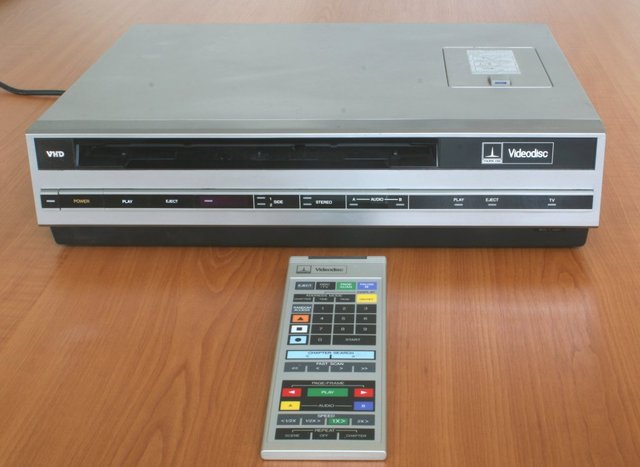Movies on Vinyl? VHD- Developer Diary #4
Hello Everyone
During the '70s, when it began to introduce the VCR, cameras and the sale of movies for consumption outside theaters and cinemas, they began to create different formats to see the films available at that time, of course, the most famous was: Vhs and Betamax, but at the time one of the big electronics companies at that time called JVS bet on a different format of the reproduction of the tapes. Seeing the success of the reception of the vinyl records in their time and that these, in turn, turned out to be a great leap for the reach of music, they took this example to introduce it in the field of video reproduction, the implementation of this product was made in Japan with ideas of expansion, the idea was to stop using the tapes that used a linear reproduction pictures and use a new technology, this technology which was embodied in a disk of a size in diameter of 25 centimeters achieved to store up to one hour of video on each side, yes each side, this was the why it was compared to vinyl or longplay discs, although logically it did not use grooves to reproduce, these discs worked like they do the discs nowadays, only that with several limitations, the disc if it was submitted to frictions with the reader and for which this could wear out with time besides the discs they turned to two frames, that is to say, each turn of the disc were two frames that were shown on the screen, when the user wanted to pause a scene, this had a permanent movement since the disc could not load a single frame.

The interesting thing about this format was its ability to skip sectors of the disc, this ability had to be programmed by the person in charge of recording the content on the disc, this made it a unique format in its kind since it was highly interactive and its functionality was exploited by JVC to create video-magazines and interactive video games like Castles and Dragons genre. The only drawback with this format was the complexity with which the content was recorded, it had to be done by professional hands and people with high degrees of knowledge of electronics, which made getting the disc for sale become expensive.


To be a format for the reproduction of forgotten video, gave several advances in home technology issues, this format was the first to give the possibility to play videos in 3D, to achieve 3D vision was necessary to connect the player a pair of glasses LCD shutter, the video that had the discs was the next one, in the right part a single field of vision was shown and in the right side there was an alternative field moderately separated from the right side, from the right side there was the color red and from the left side the blue side, generating the vision of separation of objects by the focal point and the creation of a 3D view. The films released in the 3D format were:
Jaws 3D (2-discs, 4-sides, Stereo)
Friday The 13th Part III in 3D (2-Discs, 4-sides, Mono)
Spacehunter: Adventures In The Forbidden Zone (2-discs, 4-sides, Stereo)
Metalstorm: The Destruction Of Jarred Syn (2-discs, 4-sides, Stereo)
Comin'At Ya! (preview cut, 2-discs, 3-sides, mono audio)
Fun-Fun-Fun (1-disc, 2-sides, Stereo)
Momoco Club (no idea what this title is)
House Of Wax (2-discs, 4-sides, Stereo)
Dial M For Murder (2-discs, 4-sides, Mono)
Starchaser (2-discs, 4-sides, Stereo)
Source: VHD DiscWorld
Unfortunately, as previously mentioned, the production costs of these discs made it unprofitable for the producers to record films for that format and little by little their use in Japan was falling. Mainly it began to be used in the creation of video games of the adventure genre and the purchase of this product is currently done by collectors.
Do not forget to show my Patreon page and if you can support I would be very thankful
https://www.patreon.com/MikeWrite
